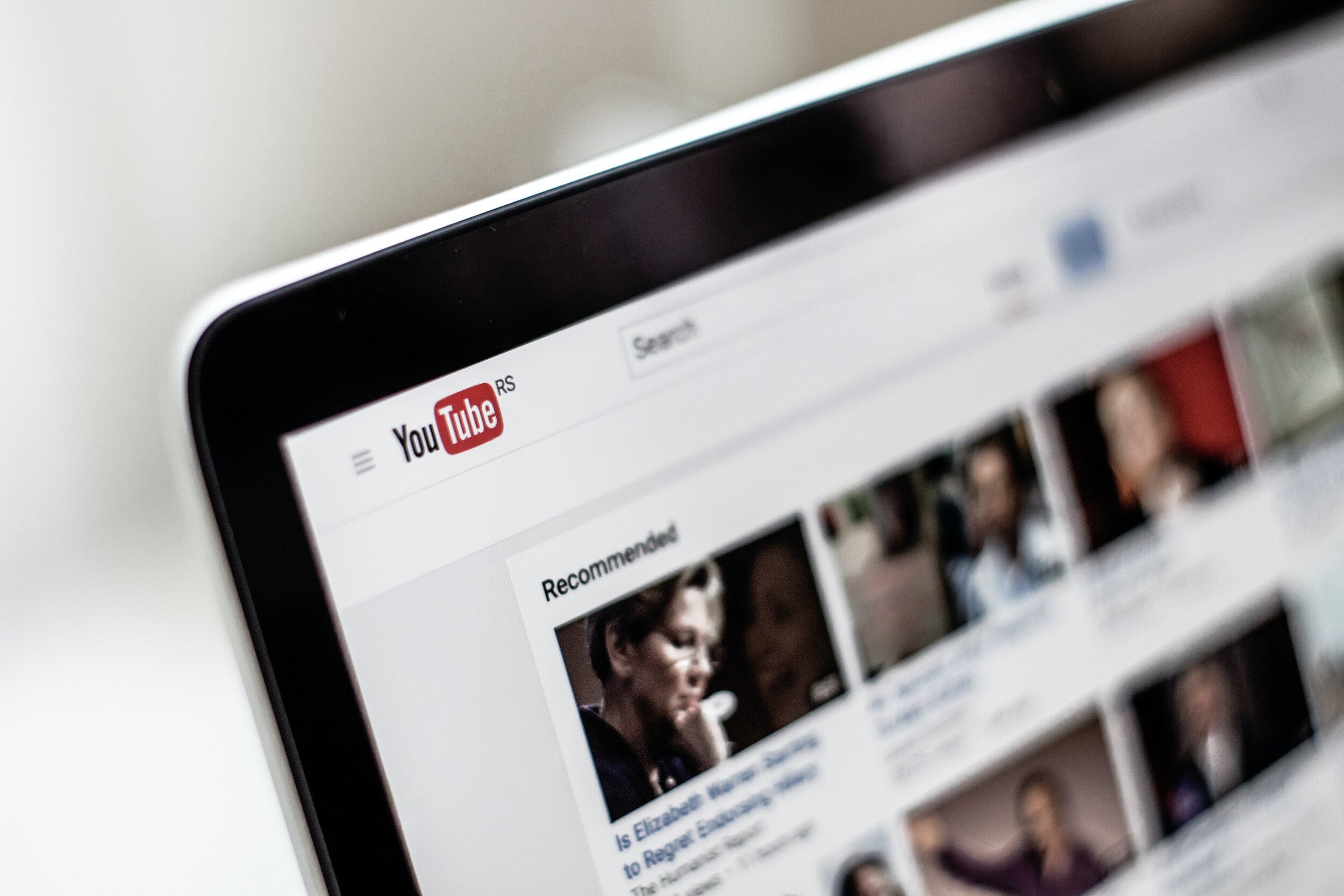Digital Detox 101: How to be Mindful of Your Screen Time
Photo by Christin Hume on Unsplash
Listen to the See Me Show podcast, where I chat with host Hailey Rodgers about the effects of technology on our mental health and how to set healthy digital boundaries.
Screens are everywhere you look – smartphones, computers, tablets, social media websites, TVs. Unless you live deep in the woods, you can’t go far without running into a screen.
What’s displayed on these screens have the power to shape the way we view everything – ourselves, our community, the world, the past, present and future. Everything. We develop an amplified self-awareness of how we’re perceived, which influences the decisions we make and what we think.
This can trigger feelings of loneliness and insecurity, like we aren’t as successful as others.
Another key factor with the internet is the 24-hour news cycle. Constantly being force-fed information about everything that’s happening across the globe? It’s overwhelming! It makes my already-noisy brain feel like mush!
More and more, people are becoming aware of how often they’re mindlessly scrolling on their screens and setting boundaries, initiating what is commonly referred to as a “digital detox.”
A digital detox isn’t a new concept. In fact, it’s been around for quite a few years. (Remember Nickelodeon’s Day of Play, a failed attempt to encourage us to turn off our TVs and go outside, as if we didn’t just watch a different channel on that day?)
However, it has become more popular within recent years. We’re realizing how harmful and fake social media can be, and therefore pushing away from life online. With the pandemic, we’re even discovering a deeper appreciation for genuine face-to-face interaction and living in the present moment.
If you’re considering a digital detox, it’s important to understand the benefits and how to effectively reduce your screen time.
Why Do a Digital Detox?
Before you begin consciously limiting your screen time, ask yourself two questions: what feelings arise when I feel like I use technology too much, and how would doing a digital detox enhance my life? The way you answer these questions will affect how you will go about your digital detox.
If being on the internet, specifically social media, triggers feelings of insecurity and loneliness, dive into what the causes may be. Start your detox by analyzing who you are following and the quality of the content you are consuming – does what you’re seeing add to your life? If the answer is no, hit the unfollow button, baby! This isn’t necessarily a poor reflection on them – this is about you and your needs. No hard feelings!
Perhaps scrolling through social media makes your brain feel crowded, loud and fuzzy. This could be a sign you’re consuming too much content, and your brain needs break – go for nature walks, meditate, soak in a warm bath.
Do you feel physically ache after sitting down and using technology for a long period of time? Reducing your screen time could also reduce your pains. By consciously getting off of your phone and moving your body, even if for a few minutes every day, you’re more inclined to improve your physical health and overall well-being.
Maybe you mindlessly watch a screen and/or scroll to numb the pain you feel offline?
Why you want to do a digital detox is personal to you, and it’s okay if that reason changes overtime, especially as you develop your relationship with yourself. It can even be a combination of any of the above reasons!
Now that you’ve established your feelings and reason behind wanting to do a digital detox, here are a few ways to be more mindful of your technology use.
1. Reframe your perception of technology
Personally, I’m not a major fan of the term “digital detox,” because it looks at technology as black and white, when (like anything) it’s a spectrum.
Technology can be a wonderful addition to our lives! We use it to connect with communities from across the globe, people who we would’ve never met otherwise and who can bring out our most authentic selves; we use it to watch movies and TV shows that give us joy, a sense of belonging and inspiration; we use it to express our creativity and create a digital album that holds our most cherished memories. I love technology! (Cue Kip’s wedding song from “Napoleon Dynamite.”)
However, when used in a way that’s harmful to us, it can be destructive, especially when you have a poor relationship with yourself. (That’s where the two earlier questions come into play.)
When I was younger, I was more insecure and impressionable. Therefore, my hyper-dependent relationship with social media was toxic to my self-image and sense of worth – if I didn’t have enough likes, followers or Facebook friends (when Facebook was cool), I’d think poorly of myself.
Now, through developing a healthier relationship with technology and myself, I see the internet as a tool, and I set boundaries as a way to be more mindful and present, to clear my head. (As an introvert and a writer, I live in my head quite often, so it’s already noisy.)
Even with setting boundaries, I genuinely enjoy using technology, when it adds to my life – watching my favorite shows and movies, connecting with others via Instagram, discovering new music and books through TikTok.
Instead of viewing it as a “digital detox,” think of it as being mindful of your screen time. This paints it in a more positive light rather than viewing it as pass-or-fail, easing your anxieties about doing a perfect digital detox. (Spoiler alert: there is no such thing!)
2. Declutter your phone
There’s an app for everything. Order food to your house within minutes without having to speak to anyone, digitally mark the places you’ve pooped on a map, block Kardashian-related content from your internet (seriously, it’s call K-Blocker), just by tapping on a screen.
How many of the apps you have on your phone genuinely beneficial?
Are you scrolling through these apps out of enjoyment or out of habit?
Delete the apps on your phone that trigger negative feelings and behaviors (anxiety, insecurity, being overly self-critical).
Personally, although I have a Facebook, Twitter and LinkedIn (more so out of necessity for my digital marketing jobs), I don’t have the apps on my phone, nor am I logged into them on my computer. This eliminates the temptation to check my notifications and then subsequently scroll through content I’m not actively enjoying.
With the apps I enjoy using, such as Instagram, TikTok and Pinterest, I tuck them away in my phone’s folders, where they aren’t in immediate view on my home screen. This way, I’m less likely click on them.
You can also utilize app features that give you control on what type of content you see within those platforms. Only follow people who genuinely add excitement, entertainment and education to your life (like these self-love TikTokers and Instagram accounts), and unfollow the rest. This isn’t necessarily a personal attack against the person – this is for your benefit.
For Instagram specifically, I use the mute button often, which allows you to hide the posts and Stories of specific users you follow. Although I only follow people who I admire and/or whose posts brings me joy, muting what I see reduces the likelihood of clicking through Stories, purely out of habit.
Photo by Gabrielle Henderson on Unsplash
3. Set screen time limits
Avoiding screens is difficult, especially when it’s done out of habit.
Luckily, many phones and apps have features that allow you establishing daily usage limits – utilize them! Whether it’s setting limits for specific apps or putting your phone’s notifications on “Do Not Disturb,” there are a number of ways you can reduce your temptation to mindlessly scroll.
You can also set mental screen limits when you’re offline. This means not using your phone in the morning, leaving it outside of your bedroom or turning it off an hour before bed. Do what works best for your schedule and goals!
4. Notice when you grab for your phone
Ever notice yourself subconsciously grabbing for your phone when you’re bored or not doing anything particularly engaging, like waiting in line? This is your opportunity to recognize when you feel the urge to pick up your phone and practice not doing so.
I’ll admit it, this is be a tough habit to kick. Since we’re used to having a plethora of new information at our fingertips 24/7, our brain aren’t used to inactivity and our attention spans have shortened.
Take the time to practice positive or even neutral self-talk, encouraging yourself to not grab for your phone and instead soak in the details of your surroundings. The words we say to ourselves matter tremendously!
5. Fill the gaps with new hobbies
Now that you’re actively reducing your screen time, use that freedom to try new hobbies or activities that bring you back to the present.
If you’re unsure what activities you’d like to partake in, your answer to “what feelings arise when I feel like I use technology too much” is a helpful place to start. Going for walks or meditating may alleviate the brain cloudiness you feel, while journaling can help with feelings of insecurity.
Here are a few ideas:
Go for a nature walk
Meditate
Journal
Read
Join an exercise class
Schedule regular hangouts with your friends during the week
Embroidery
Painting
Remember: you don’t need to be good or perfect at your hobby. Do what brings you joy!
Give Yourself the Space to be Imperfect
Now that you’ve established how you’re going to set boundaries on your screen time, it’s time for the most important step – be easy on yourself!
Especially when you’ve grown up with technology, it’s difficult to kick an addictive habit you’ve had for years. You’ll most likely have days when your screen time is longer than usual and days when it’s shorter than usual, and that’s normal. Setting digital boundaries takes hard work, not perfection (there is no such thing).
The key is to ebb and flow with what your lifestyle requires of you and what your screen goals are, while consciously honoring what’s best for you. Encourage yourself, set realistic goals, sit with the uncomfortable feelings of staying off of your phone – this is all a part of the process.
You’ve got this!
Your friend,
Jane







